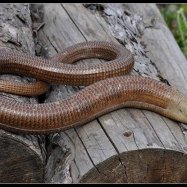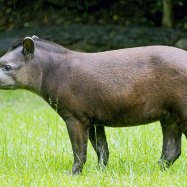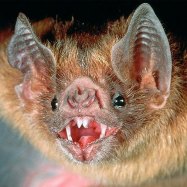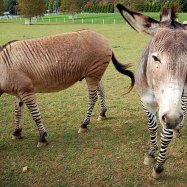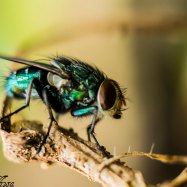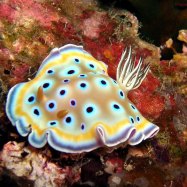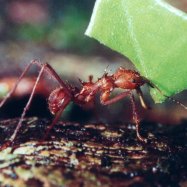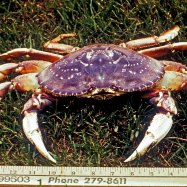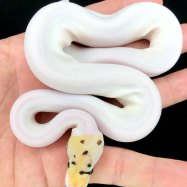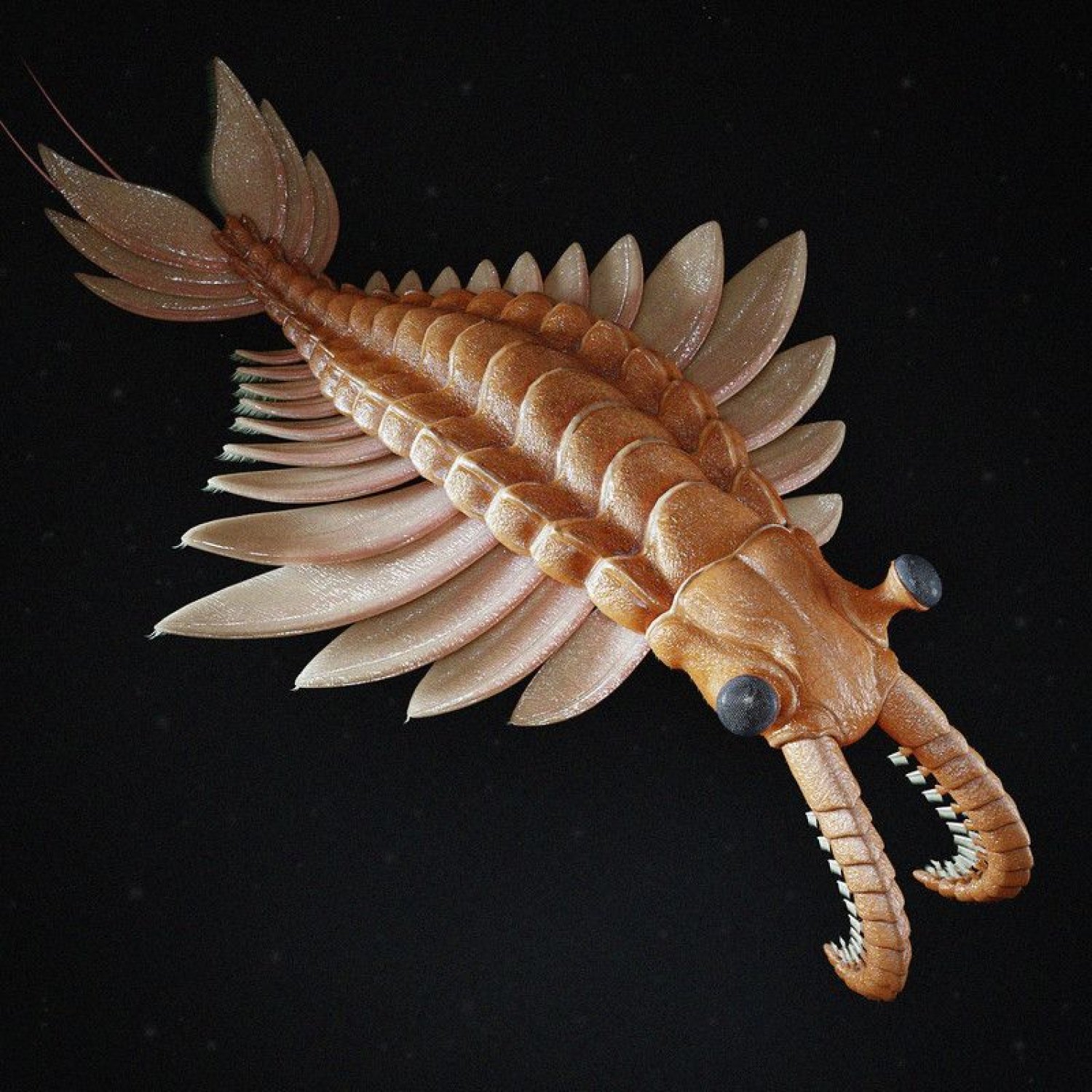
Anomalocaris
Up to 1 meter
Discover the extinct Anomalocaris, a fascinating animal that roamed the seas millions of years ago. With a length of up to 1 meter, this creature had an elongated and segmented body, belonging to the family Anomalocarididae. Although it is only found in the fossil record, its unique body shape makes it a popular subject for paleontologists and animal enthusiasts alike. #Anomalocaris #FossilRecord #PrehistoricAnimals
Animal Details Summary:
Common Name: Anomalocaris
Kingdom: Animalia
Habitat: Marine
The Mysterious Anomalocaris: An Ancient Sea Predator
The Cambrian period, approximately 541 million years ago, was a time when life on earth started to diversify and flourish. During this time, the seas were teeming with unique and unusual creatures, many of which do not exist today. One such fascinating creature was Anomalocaris - a giant, carnivorous predator that ruled the Cambrian seas. Let's dive into the world of this mysterious creature and uncover its secrets Anomalocaris.The Discovery of Anomalocaris
The name Anomalocaris comes from the Greek words "anomalous" and "crab," meaning "unusual crab." However, this creature was anything but a crab. Anomalocaris was first discovered in 1892 by Canadian paleontologist Joseph F. Whiteaves while studying fossils in the Burgess Shale in British Columbia. Whiteaves initially thought the fossil was a type of shrimp, but further research revealed that it was a completely new and unique animal.For many years, Anomalocaris remained a mystery, with scientists unable to properly classify it due to its unusual features. It wasn't until the 1970s and 1980s when new fossils were discovered, and paleontologist Harry B. Whittington described Anomalocaris as an arthropod, making it one of the oldest and most primitive arthropods ever known.
Ancient Anomalocaris: The Ruler of Cambrian Seas
Anomalocaris was a fierce predator that ruled the Cambrian seas, measuring up to 1 meter in length Arthropleura. It had a long, segmented body with a pair of large, grasping appendages at its head, making it one of the largest predators of its time. Its body was covered with a tough exoskeleton, making it well-suited for life in the marine environment.This ancient creature was a dominant force in the Cambrian seas and was likely an opportunistic feeder, preying on a variety of smaller animals, including trilobites, worms, and even smaller Anomalocaris. Its large, grasping appendages, with sharp claws, helped it to catch and kill its prey with ease. Anomalocaris was truly a predator to be feared in the ancient sea.
The Unique Features of Anomalocaris
Anomalocaris had several unique features that set it apart from other creatures of its time and even today's animals. One of its most distinct features was its large, grasping appendages, composed of several segmented joints that ended in sharp claws. These appendages were attached to its head, making it appear like a pair of large arms, giving it a somewhat alien appearance.Aside from its formidable appendages, Anomalocaris also had large, complex eyes, which were one of the first evidence of advanced vision in the animal kingdom. Its eyes were made up of over 16,000 individual lenses, giving it exceptional vision and making it a skilled hunter.
Anomalocaris also had a unique body shape, with an elongated, segmented body that allowed it to move through the water with ease. Its body was made up of several segments, with each segment bearing a pair of feathery gills, allowing it to absorb oxygen from the water.
The Mystery of Anomalocaris' Feeding Method
Despite being a top predator, scientists are still unsure of how exactly Anomalocaris fed on its prey. One theory suggests that it used its large, grasping appendages to pick up its prey and bring it to its mouth, located on the underside of its head. Another theory suggests that it had a unique feeding mechanism, using its appendages to create a suction-like motion, pulling in its prey to its mouth.Interestingly, some scientists believe that Anomalocaris may have also had the ability to swim backward, making it a versatile and efficient hunter.
The Habitat and Distribution of Anomalocaris
Anomalocaris inhabited the Cambrian seas, which covered much of the Earth's surface during the Cambrian period. These seas were rich in oxygen and nutrients, providing an ideal environment for diverse marine life to thrive. It is thought that Anomalocaris lived in shallow waters, close to the coast, and may have even hunted in groups, much like modern-day sharks.The fossil record shows that Anomalocaris was found all over the world, with specimens discovered in North America, China, Australia, and Greenland. This suggests that it was a widespread and successful species.
The Coloration and Size of Anomalocaris
One of the most intriguing mysteries surrounding Anomalocaris is its coloration. As with many extinct animals, scientists cannot determine the exact color patterns of Anomalocaris, as pigments do not fossilize. However, based on the evidence of its eyes, some scientists believe that Anomalocaris may have had highly developed color vision and perhaps had bright coloration to attract mates or camouflage itself.As for its size, the largest known Anomalocaris specimen measures 1 meter in length, but it is believed that some individuals may have grown even larger. This makes Anomalocaris one of the largest predators of its time.
Anomalocaris Today: Location and Conservation Status
Unfortunately, Anomalocaris is an extinct species and can only be found in the fossil record. Its fossils have been found in various locations around the world, with the most significant concentration in the Burgess Shale of British Columbia, Canada. This site is a UNESCO World Heritage Site and is protected, allowing scientists to continue studying and learning from these ancient fossils.Being an extinct species, Anomalocaris does not have a conservation status. However, its fossils are highly valued and protected, ensuring that scientists and future generations can continue to learn about this fascinating creature and its role in the ancient marine ecosystem.
The Evolution of Anomalocaris
Anomalocaris belongs to the family Anomalocarididae, which is part of the order Radiodonta, a group of extinct marine arthropods. These creatures evolved during the Cambrian period and were among the earliest predators on Earth. Anomalocaris is thought to have evolved from a cryptic ancestor, and its unique features, such as its grasping appendages and advanced vision, were likely adaptations to its predatory lifestyle.However, Anomalocaris went extinct at the end of the Cambrian period, and its exact lineage cannot be traced. Scientists believe that its descendants may include some of the earliest arthropods, such as trilobites and chelicerates.
The Importance of Anomalocaris
Despite its mysterious nature, Anomalocaris holds great importance in the study of evolution and the ancient marine ecosystem. Its advanced vision, grasping appendages, and unique body shape provide valuable insights into the early evolution of arthropods and their predatory behavior.Moreover, Anomalocaris is also an excellent example of the diversity of life forms that existed during the Cambrian period. Its existence challenges our understanding of how life evolved on Earth and highlights the many undiscovered species that may have lived during this time.
The Legacy of Anomalocaris
Anomalocaris may be long gone, but its legacy lives on through its fossils and the valuable information they provide. Thanks to these fossils, scientists have been able to paint a clearer picture of the ancient marine ecosystem and how creatures like Anomalocaris played a vital role in shaping it.Furthermore, Anomalocaris continues to capture the imagination of people today, with its unique features and mysterious nature making it a subject of fascination and wonder. Its legacy will continue to inspire scientists and the general public for generations to come.
In Conclusion
Anomalocaris is an ancient sea predator that has captured the imagination of people for over a century. Its unique features, advanced vision, and predatory behavior make it an essential part of the study of evolution and the ancient marine ecosystem. While we may never know all the secrets of this mysterious creature, one thing is for sure - Anomalocaris will continue to fascinate and intrigue us for years to come.

Anomalocaris
Animal Details Anomalocaris - Scientific Name: Anomalocaris
- Category: Animals A
- Scientific Name: Anomalocaris
- Common Name: Anomalocaris
- Kingdom: Animalia
- Phylum: Arthropoda
- Class: Dinocaridida
- Order: Radiodonta
- Family: Anomalocarididae
- Habitat: Marine
- Feeding Method: Carnivorous
- Geographical Distribution: Cambrian seas
- Country of Origin: N/A
- Location: Fossil record only
- Animal Coloration: Unknown
- Body Shape: Elongated and segmented
- Length: Up to 1 meter
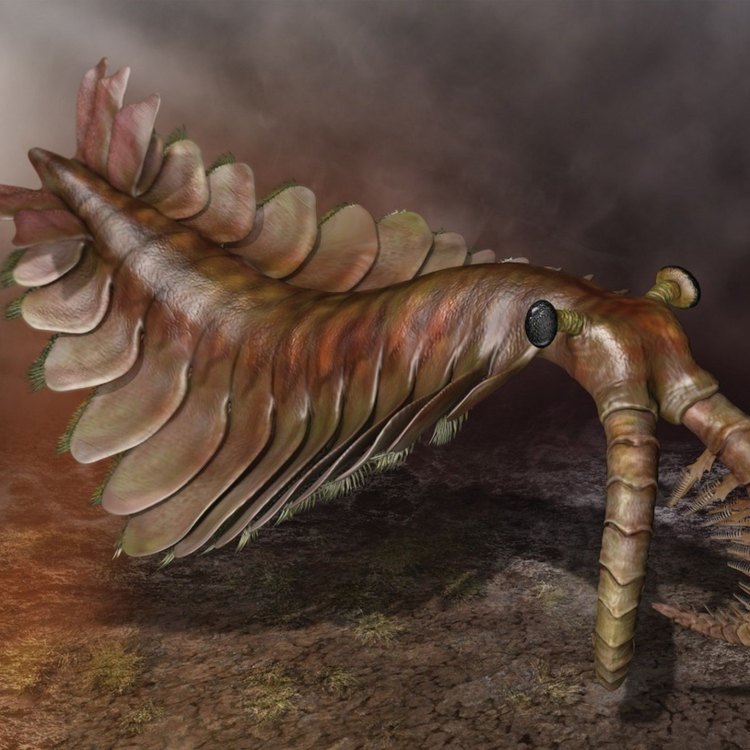
Anomalocaris
- Adult Size: Up to 1 meter
- Average Lifespan: Unknown
- Reproduction: Sexual
- Reproductive Behavior: Unknown
- Sound or Call: Unknown
- Migration Pattern: Unknown
- Social Groups: Unknown
- Behavior: Unknown
- Threats: Extinction (fossils only)
- Conservation Status: Extinct
- Impact on Ecosystem: Unknown
- Human Use: None
- Distinctive Features: Large size, segmented body, prominent appendages
- Interesting Facts: Anomalocaris is one of the largest known Cambrian animals and is considered one of the first apex predators in the fossil record.
- Predator: Unknown
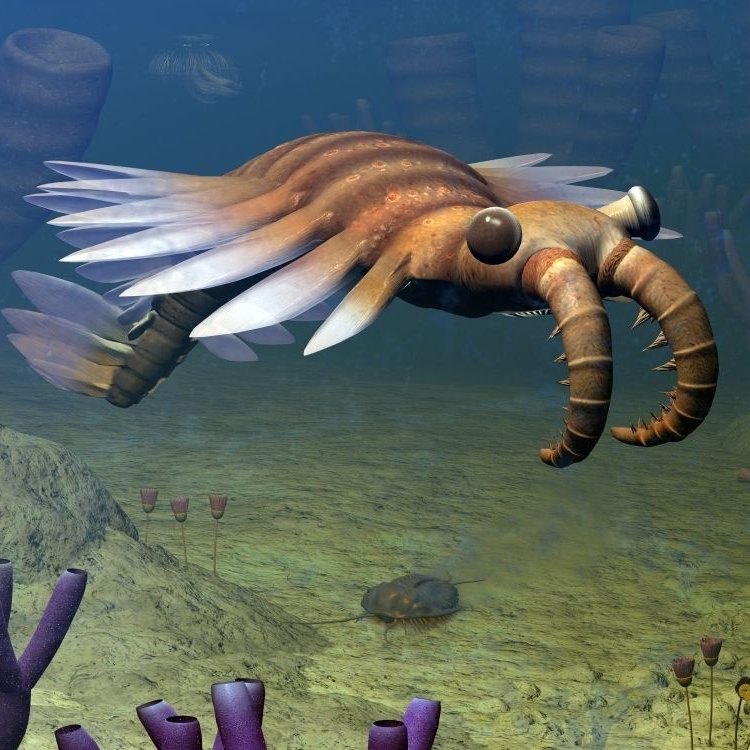
Anomalocaris
The Magnificent Anomalocaris: Uncovering the Secrets of One of the Largest Apex Predators in the Fossil Record
Throughout the history of the Earth, there have been countless creatures that have roamed the land and sea. Some we are familiar with, while others remain shrouded in mystery. Among these ancient creatures is the Anomalocaris, one of the largest known Cambrian animals and one of the first apex predators in the fossil record. With its massive size, segmented body, and prominent appendages, the Anomalocaris was truly a magnificent and enigmatic creature PeaceOfAnimals.Com.In this article, we will dive deep into the world of Anomalocaris, exploring its distinctive features, behavior, and impact on the ecosystem. We will also uncover some interesting facts about this ancient predator and its place in the ever-evolving landscape of the Earth.
The Rise of Anomalocaris
Anomalocaris, whose name means "abnormal shrimp", lived during the Cambrian period, approximately 550 million years ago. At that time, the Earth was a very different place, with a vastly different climate and a very different array of species than what we see today.During the Cambrian period, the Earth experienced a surge in the diversity of life forms, known as the "Cambrian explosion". It was during this time that complex organisms first appeared, giving rise to many of the animals we see today. And one of the most fascinating creatures to emerge during this period was the Anomalocaris.
A Giant Among its Peers
One of the most distinctive features of the Anomalocaris was its large size. As an adult, it could reach up to 1 meter in length, making it one of the largest creatures of its time Alpaca. To put that into perspective, the average length of a human is around 1.7 meters, meaning Anomalocaris was about half our size.But what's even more impressive is that Anomalocaris was not just big, it was also a powerful and efficient predator. Its segmented body allowed it to move swiftly through the water, while its prominent appendages were used to catch and subdue its prey. These appendages, which resembled large hooks, were located on its mouth and could close in on its prey to create a powerful suction force.
Ancient Practitioners of Sexual Reproduction
While the reproductive behavior of Anomalocaris is still largely unknown, it is believed that they practiced sexual reproduction. This was a relatively new form of reproduction at the time, as most creatures during the Cambrian period reproduced asexually. Sexual reproduction allowed for a greater diversity in offspring and may have played a role in the rapid evolution of the Anomalocaris.However, with limited knowledge about their reproductive behavior, it is unclear if Anomalocaris had any specific mating rituals or social groups.
A Mysterious World: Unknown Behavior, Sound, and Migration Patterns
As with most creatures from the Cambrian period, the behavior of Anomalocaris remains a mystery. Due to the limited information we have from fossil records, it is difficult to determine how these creatures behaved in their natural habitat. We can only imagine the world they lived in and how they interacted with other organisms around them.Similarly, we do not know if Anomalocaris had any specific sound or call that it used to communicate with others of its kind. It is also unknown if and how Anomalocaris migrated, as their fossils are often found in various locations around the world.
The Constant Threat of Extinction
Unfortunately, the Anomalocaris did not survive beyond the Cambrian period. Like many other species from that time, it eventually went extinct. The only remnants of its existence are the fossils discovered by paleontologists.This extinction was likely due to the changing environmental conditions at the end of the Cambrian period, which could not support the survival of Anomalocaris and other creatures from that time. However, despite its eventual extinction, Anomalocaris left a lasting impact on the ecosystem during its existence.
The Impact on the Ecosystem
As an apex predator, Anomalocaris played a crucial role in regulating the ecosystem during its lifetime. By preying on smaller organisms, it helped to maintain a balance within the food chain. As a result, the extinction of Anomalocaris could have had a significant impact on other species and the overall ecosystem.But it's not just its role as a predator that made Anomalocaris important. The abundance of this creature during the Cambrian period indicates a thriving ecosystem, with plenty of food and resources available for these ancient creatures.
Forever Preserved in Fossils
While we may never get to see Anomalocaris in real life, the fossils that have been discovered continue to captivate and fascinate scientists and paleontologists. These delicate fossils allow us to piece together a small part of the puzzle of Earth's history and give us a glimpse into the diverse creatures that once roamed the planet.Because of its distinctive features and significant role in the ecosystem, Anomalocaris is a frequent subject of study and research. Through these studies, we continue to learn more about this enigmatic creature and its place in the ever-evolving natural world.
The Missing Pieces: Human Use and its Impact on Anomalocaris
Unlike many other ancient creatures, the impact of humans on Anomalocaris is minimal. The chances of coming across an Anomalocaris in modern times are extremely slim, if not impossible. This is because the fossils of Anomalocaris are typically found in remote locations, such as deep beneath the ocean floor or in remote areas with little human activity.However, the study of Anomalocaris and other ancient creatures is crucial in understanding the history of our planet and the impact humans have had on it. By studying these creatures, we can better understand the changes in the Earth's climate and ecosystem over time, and how human activities have affected these delicate ecosystems.
The Fascinating Anomalocaris: Uncovering the Mysteries of the Past
In conclusion, the Anomalocaris is a truly magnificent and fascinating creature. From its large size and powerful appendages to its mysterious behavior and eventual extinction, this ancient predator continues to captivate our imagination.Through ongoing research and study, we hope to uncover more of the secrets that this creature holds, giving us a better understanding of the Earth's history and the ever-changing world we live in. And who knows, perhaps one day we may even come across a living Anomalocaris swimming in the depths of our oceans, reminding us of the incredible diversity of life that has existed on our planet.
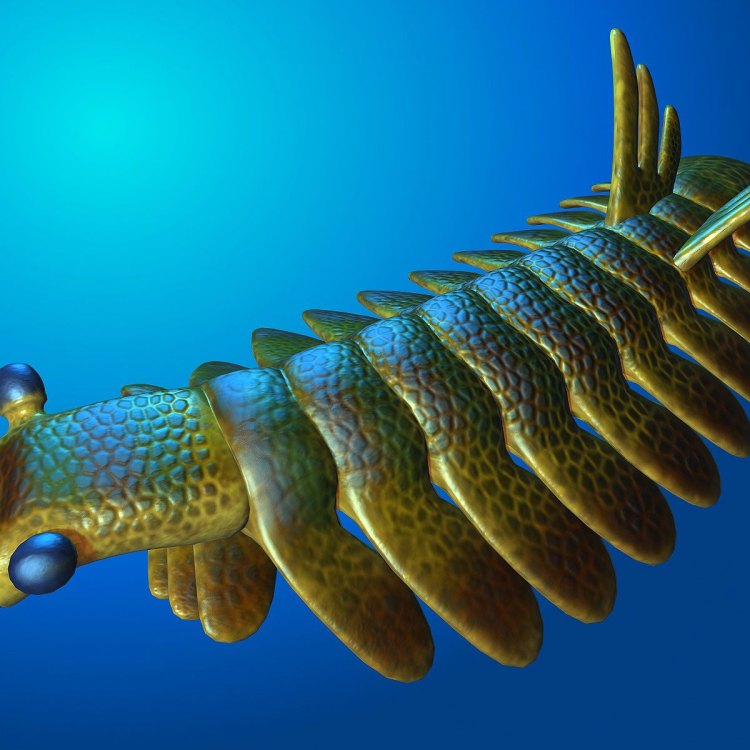
The Mysterious Anomalocaris: An Ancient Sea Predator
Disclaimer: The content provided is for informational purposes only. We cannot guarantee the accuracy of the information on this page 100%. All information provided here may change without prior notice.

